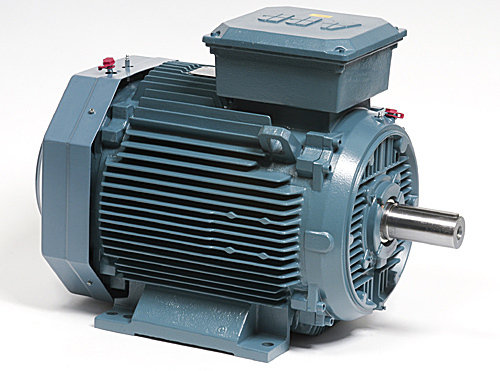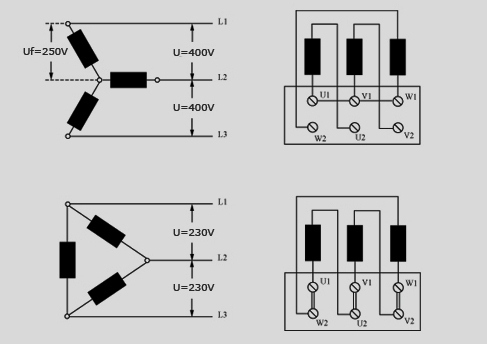Now you are talking! Low-RPM Permanant-Magnet Motor Conversion? Had no Idea This Was Possible! Like 100X!! I was never much in favor of grid-tie anyway. Much better I think to maintain isolated parallel systems. 1) Grid as usual 2) Your own system, whether low-voltage DC, High-Voltage AC, or whatever you want. House wiring is cheap compared to these high-dollar grid-tie inverter systems, designed, sold and repaired by someone else, no user-serviceable parts inside. 
Here in Norway you get paid for the electricity you overproduce, one solution they offer is quatrerly accounting/ballance of energy produced and consumed, if you have produced more than you have used you get paid for that electricity, they actually pay more for the energy you produce than the one you buy (green certificate power) its a government incentive.
This is why I want to be grid tied and also security of power if my equipment is broken and need repair.
That makes since. It is nice to know some places they actually loom out for the little guy trying to do the right thing.
So where do we find these generators? I looked online and came up empty handed.
Hi Bill
A standard asyncron motor become a generator when you turn it faster than the rated RPM
Connect it to a engine fuled on woodgas and there you go 


I would really like to hear what your utility says on all this. I know that if it was here and I was DIY ing it I would solve the problem with a 48 volt dc gen head maybe 2, a tiny battery bank and a series of used micro inverters probably enphase ones All for less then 5000 canadian with all the shutdowns and safety features our over regulated grid demands. That would allow me to regulate the rate I fed into the grid in increments of 1 micro inverter at a time. It would allow a lot of wiggle room as the gas quality fluctuated and give me an air of respectability to regulators…
Cheers, David
Hi Bill,
This is the link i posted above, in case you missed it.
Hi David,
I agree, depending what your regulations are, connecting anything to the grid should be done carefull.
The induction generator is however a good thing to bear in mind, even for of grid use and if modified as PMG, i definitiv love it…
In case of Roger, i sure would do the same… or even go bigger cause all the wood he has 
OK, I started to look into this micro-inverter grid-tie thing. I believe that is the future. So, for every solar panel, a micro grid-tie inverter. For every generator / battery bank, a micro (or larger) grid-tie inverter. The input voltage range on the AIMS micro grid-tie unit is 16 to 60 volts. That is a pretty wide range. 250watts is not much, but 1000’s of 250 watt units are a power plant! 
I agree with you Mike regarding micro-inverters in general, how ever one need to start some where.
And in my case that would be to use what is available to me and also at best cost.
Since i like to put around 10kW or hopefully more in to the grid its extreamly cheap to use used asyncron motors, the most used electric motor in the world and with the durability supirior to brushed motors.
This would be my starting point with woodgas grid tie, but in the future I hope to have solar too.
As electric cars can be picked for parts as we speak I hope to get a wreck of a Nissan Leaf or a I-Miev, the second hand price is as low as 800 dollars here in Norway for the 16kWh powerpack of the I-Miev.
With two of those packs I can run the farm for more than a day when I use exess heat from the gasifier and engine.
You see, Roger. We’re finally getting there. It takes a while getting used to the idea 
I’m all for safety but most of us connect induction motors to the grid every day. We call it “plug it in”. Most of us even run them in generator mode from time to time, without thinking about it (lowering a weight with a telpher/crane for example).
Just curious, what’s the status of your grid connection? I know I have only 3X16A main fuses at 400V, which allows me to run only slightly above 10kW either way, at the most.
Also, if you plan on using batteries, will that be a separete domestic inverter grid? Or do you plan on turning the grid tied induction generator with another battery powered motor?
My mains at the farm is 3x125A at 230V, we are on a old IT network.
That mean about 50kW as the maximum I can produce.
If I add a battery bank Ill use the bank as a buffer, charge it up during gasification and consume it when I have downtime on the generator.
Wow, 50 kW. You must have pretty sturdy wires. You´ve got 230V phase to phase in Norway, right?
Yes, I understand the buffering idea, but how do you plan to convert DC to AC? Grid tied AC or separate system?
Yeh I have 230V phase to phase here on the old grid, new installations have like you 400V phase to phase.
125A or more is normal for farms here.
It would still be grid tied at request, the grid take over if the battery voltage drop too much, but if the generator is running it would both charge and deliver to the grid.
Indoor panel 24” x 24” by 8” deep with the following
5 cycle breaker 200 amp
Sync device 25
Under over voltage device 27 / 59
Over / under frequency relay 81 o / u
May be combined into single SEL 547 relay
Panel and Relay settings and programming $ 12,500
My services for filling out and assisting the PLAN A level 4 application
Is $ 130 per hour portal to portal
Expected to spend about 16 hours total estimate $ 2,080
Gathering data and creating one line diagram
And setting up account online and submitting to comed
And reviewing start up
Not included is any fees or charges from com-ed for this project.
Com-ed may require Witness testing which will cost about $3,000
To get the relays tested on your site and in front of com-ed
I Said this cost too much
I fully understand your position and agree with you.
I have been building power plants for over 27 years and understand that the smaller the prime mover the lees inviting to connect to grid it is.
And the electrical equipment and com-ed make it cost prohibitive.
It is not Me that is causing the cost to be so much.
The material and time to get the system set up to com-ed’s specifications are the problem.
I have suggestion if you are open to other ways of doing things ?
You could take your AC power and run it through some diodes on a full way bridge of appropriate amps size
To get a voltage that would feed a on grid solar panel inverter.
The solar inverters are IEEE 1547 compliant and can get interconnect approval in about 5 weeks for $50
Do you want my help to do this ?
Hi there Henry, I like your idea, I would need to use capacitors to magnetise the field on the asyncron generator, how much spikes can the inverter take since we are rectifying 230V 50Hz?
And how do you set the stable load to the inverter, would it act like when you feed it to the grid the regular way?
I had an internal leak in air preheat . wood gas was burned inside pryrolizer . I caped air inlet and used lighter tube as air inlet . This got the generator running again . Like I had it running for first time .connected to battery , battery connected to inverter .
inverter connected to grid . Inverter ignored generator and drew equalizing charge from grid . I had like four runs of an hour
perhaps once I did actually export power from wood gas to grid . Engine barely runs valves are sticking .
I did not do that , I would not do that Ballard Engineering Inc. suggested that . I would ask a local electrician about the grid tie
the thing is called anti islanding . when the grid goes down you are to stop sending power to grid . due to the death of a lineman . It had nothing to do with renewable energy . It does make any sense . I think you would want the opposite . too keep the grid up . Power company wants to restrict other power producers . It should be considered criminal except they wrote the laws .